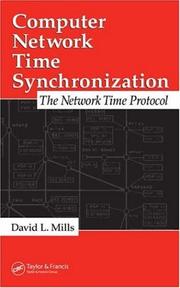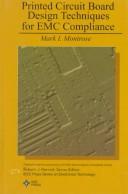| Listing 1 - 10 of 225 | << page >> |
Sort by
|
Book
ISBN: 9780434906604 0434906603 Year: 1986 Publisher: London: Heinemann,
Abstract | Keywords | Export | Availability | Bookmark
 Loading...
Loading...Choose an application
- Reference Manager
- EndNote
- RefWorks (Direct export to RefWorks)
Book
ISBN: 1523127422 1785618180 Year: 2020 Publisher: London, England : Institution of Engineering and Technology,
Abstract | Keywords | Export | Availability | Bookmark
 Loading...
Loading...Choose an application
- Reference Manager
- EndNote
- RefWorks (Direct export to RefWorks)

ISBN: 9780849358050 0849358051 0849358051 9780849358050 Year: 2006 Publisher: Boca Raton, Fla.: CRC,
Abstract | Keywords | Export | Availability | Bookmark
 Loading...
Loading...Choose an application
- Reference Manager
- EndNote
- RefWorks (Direct export to RefWorks)

ISBN: 0780310586 0780310586 9780780310582 9780780310582 Year: 1995 Publisher: Piscataway, NJ: IEEE press,
Abstract | Keywords | Export | Availability | Bookmark
 Loading...
Loading...Choose an application
- Reference Manager
- EndNote
- RefWorks (Direct export to RefWorks)
Book
Abstract | Keywords | Export | Availability | Bookmark
 Loading...
Loading...Choose an application
- Reference Manager
- EndNote
- RefWorks (Direct export to RefWorks)
Time perception in the range of milliseconds to a few seconds is essential for many important sensory and perceptual tasks including speech perception, motion perception, motor coordination, and cross-modal interaction. For the brain to be in synchrony with the environment, the physical differences in the speeds of light and sound, as well as stimuli from other modalities such as odors, must be processed and coordinated (Pöppel & Bao 2014; Bao et al., 2015). Time is a subjective feeling that is modulated by emotional states which trigger temporal distortions (temporal dilation vs. contraction) (Wittmann et al., 2014), hence give rise to subjective time that may be different to event time as initially registered in the brain. Recent research suggests that time perception in a multisensory world is subject to prior task experience and shaped by (statistical) learning processes. Humans are active learners. That is, the engagement of the own body in a timing task within a perceptual-action loop will make a noticeable difference in timing performance, as compared to when humans only passively perceive the same perceptual scenario (Bao et al., 2015; Chen & Vroomen, 2013). This Research Topic of “Sub-and Supra-Second Timing: Brain, Learning and Development” has integrated sixteen submissions of novel research on sub- and supra-timing. We have categorized the papers in this topic into the following four themes, from which we can deduce trends of research about multisensory timing in the sub- and supra-second range: Sensory timing, interaction and reliability Adaptive representation of time, learning and temporal prediction Sensorimotor synchronization, embodiment and coordination Perspective of psychological moment and temporal organization Overall, the collections in “Sub-and Supra-Second Timing: Brain, Learning and Development” show some recent trends and debates in multisensory timing research as well as provide a venue to inspire future work in multisensory timing.
time coordination --- Time Perception --- timing mechanisms --- Subjective time --- movement timing
Book
Year: 2019 Publisher: Frontiers Media SA
Abstract | Keywords | Export | Availability | Bookmark
 Loading...
Loading...Choose an application
- Reference Manager
- EndNote
- RefWorks (Direct export to RefWorks)
This eBook is a collection of articles from a Frontiers Research Topic. Frontiers Research Topics are very popular trademarks of the Frontiers Journals Series: they are collections of at least ten articles, all centered on a particular subject. With their unique mix of varied contributions from Original Research to Review Articles, Frontiers Research Topics unify the most influential researchers, the latest key findings and historical advances in a hot research area! Find out more on how to host your own Frontiers Research Topic or contribute to one as an author by contacting the Frontiers Editorial Office: frontiersin.org/about/contact
timing --- time processing --- temporal processing --- timing dysfunction --- Temporal
Book
Abstract | Keywords | Export | Availability | Bookmark
 Loading...
Loading...Choose an application
- Reference Manager
- EndNote
- RefWorks (Direct export to RefWorks)
Time perception in the range of milliseconds to a few seconds is essential for many important sensory and perceptual tasks including speech perception, motion perception, motor coordination, and cross-modal interaction. For the brain to be in synchrony with the environment, the physical differences in the speeds of light and sound, as well as stimuli from other modalities such as odors, must be processed and coordinated (Pöppel & Bao 2014; Bao et al., 2015). Time is a subjective feeling that is modulated by emotional states which trigger temporal distortions (temporal dilation vs. contraction) (Wittmann et al., 2014), hence give rise to subjective time that may be different to event time as initially registered in the brain. Recent research suggests that time perception in a multisensory world is subject to prior task experience and shaped by (statistical) learning processes. Humans are active learners. That is, the engagement of the own body in a timing task within a perceptual-action loop will make a noticeable difference in timing performance, as compared to when humans only passively perceive the same perceptual scenario (Bao et al., 2015; Chen & Vroomen, 2013). This Research Topic of “Sub-and Supra-Second Timing: Brain, Learning and Development” has integrated sixteen submissions of novel research on sub- and supra-timing. We have categorized the papers in this topic into the following four themes, from which we can deduce trends of research about multisensory timing in the sub- and supra-second range: Sensory timing, interaction and reliability Adaptive representation of time, learning and temporal prediction Sensorimotor synchronization, embodiment and coordination Perspective of psychological moment and temporal organization Overall, the collections in “Sub-and Supra-Second Timing: Brain, Learning and Development” show some recent trends and debates in multisensory timing research as well as provide a venue to inspire future work in multisensory timing.
time coordination --- Time Perception --- timing mechanisms --- Subjective time --- movement timing
Book
Abstract | Keywords | Export | Availability | Bookmark
 Loading...
Loading...Choose an application
- Reference Manager
- EndNote
- RefWorks (Direct export to RefWorks)
Time perception in the range of milliseconds to a few seconds is essential for many important sensory and perceptual tasks including speech perception, motion perception, motor coordination, and cross-modal interaction. For the brain to be in synchrony with the environment, the physical differences in the speeds of light and sound, as well as stimuli from other modalities such as odors, must be processed and coordinated (Pöppel & Bao 2014; Bao et al., 2015). Time is a subjective feeling that is modulated by emotional states which trigger temporal distortions (temporal dilation vs. contraction) (Wittmann et al., 2014), hence give rise to subjective time that may be different to event time as initially registered in the brain. Recent research suggests that time perception in a multisensory world is subject to prior task experience and shaped by (statistical) learning processes. Humans are active learners. That is, the engagement of the own body in a timing task within a perceptual-action loop will make a noticeable difference in timing performance, as compared to when humans only passively perceive the same perceptual scenario (Bao et al., 2015; Chen & Vroomen, 2013). This Research Topic of “Sub-and Supra-Second Timing: Brain, Learning and Development” has integrated sixteen submissions of novel research on sub- and supra-timing. We have categorized the papers in this topic into the following four themes, from which we can deduce trends of research about multisensory timing in the sub- and supra-second range: Sensory timing, interaction and reliability Adaptive representation of time, learning and temporal prediction Sensorimotor synchronization, embodiment and coordination Perspective of psychological moment and temporal organization Overall, the collections in “Sub-and Supra-Second Timing: Brain, Learning and Development” show some recent trends and debates in multisensory timing research as well as provide a venue to inspire future work in multisensory timing.
time coordination --- Time Perception --- timing mechanisms --- Subjective time --- movement timing --- time coordination --- Time Perception --- timing mechanisms --- Subjective time --- movement timing
Book
Year: 2019 Publisher: Frontiers Media SA
Abstract | Keywords | Export | Availability | Bookmark
 Loading...
Loading...Choose an application
- Reference Manager
- EndNote
- RefWorks (Direct export to RefWorks)
This eBook is a collection of articles from a Frontiers Research Topic. Frontiers Research Topics are very popular trademarks of the Frontiers Journals Series: they are collections of at least ten articles, all centered on a particular subject. With their unique mix of varied contributions from Original Research to Review Articles, Frontiers Research Topics unify the most influential researchers, the latest key findings and historical advances in a hot research area! Find out more on how to host your own Frontiers Research Topic or contribute to one as an author by contacting the Frontiers Editorial Office: frontiersin.org/about/contact
Science: general issues --- Neurosciences --- timing --- time processing --- temporal processing --- timing dysfunction --- Temporal --- timing --- time processing --- temporal processing --- timing dysfunction --- Temporal
Book
ISBN: 073814522X Year: 2004 Publisher: Piscataway, NJ : IEEE,
Abstract | Keywords | Export | Availability | Bookmark
 Loading...
Loading...Choose an application
- Reference Manager
- EndNote
- RefWorks (Direct export to RefWorks)
The Standard Delay Format (SDF) is defined in this standard. SDF is a textual file format for representing the delay and timing information of electronic systems. While both human and machine readable, in its most common usage it will be machine written and machine read in support of timing analysis and verification tools, and of other tools requiring delay and timing information. The primary audience for this standard is the implementers of tools supporting the format, but anyone with a need to understand the formats contents will find it useful.
Automatic timers. --- Timing circuits. --- Electric standards.
| Listing 1 - 10 of 225 | << page >> |
Sort by
|

 Search
Search Feedback
Feedback About UniCat
About UniCat  Help
Help News
News